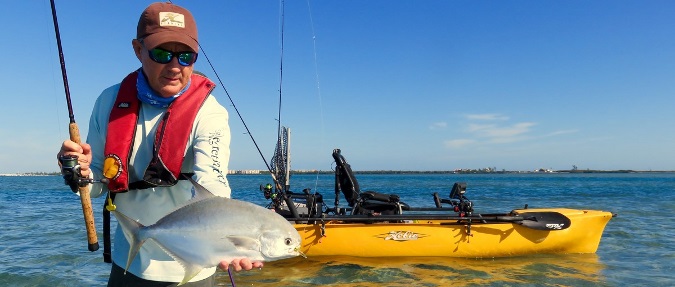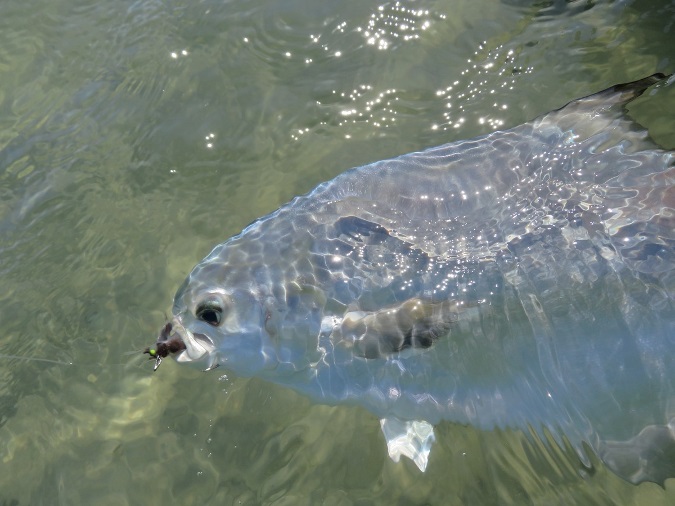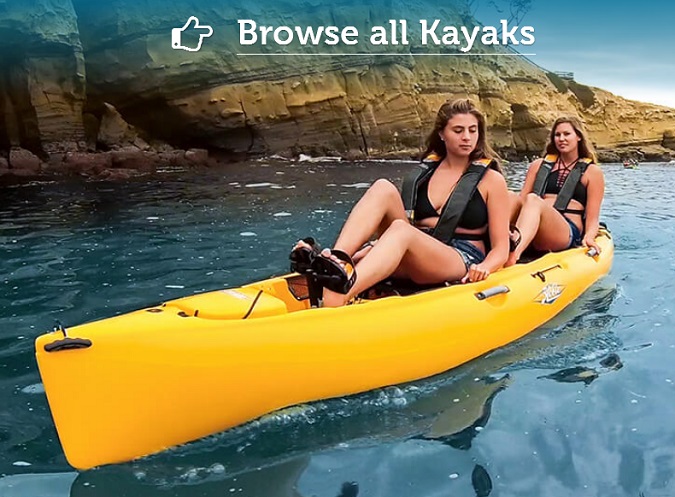The Indian River Lagoon stretches 156 miles along Florida’s east-central coast. Generally a mile or two wide and dotted with hundreds of small spoil islands, the shallow estuary is a paddler’s paradise, when healthy a diverse mecca of manatees, wading birds, porpoises and fishing opportunities found nowhere else on Earth. The somewhat-landlocked northern end is world-renowned for its schools of giant redfish, while the southern portion – my former home waters – features strong tidal flows, tropical mangrove shorelines, and the largest snook and seatrout in North America.

And big fat pompano in the winter. I’d driven eight hours in hopes of reacquainting myself with the latter.
I discovered a positive omen at the water’s edge. Following more than a year of polluted freshwater discharges from Lake Okeechobee, including mats of toxic blue-green algae, the Health Department had finally removed the colorful signs warning against human contact with the water. Even if I didn’t catch any fish, I wasn’t going to die.
Had I been told that I was paddling in the Bahamas, I wouldn’t have questioned it; sparkling white sand blanketed by patches of baby queen conch and crystal clear water. When the estuary is healthy, seagrass covers that sand, providing sanctuary not only for trout and snook, but also hundreds of other species, including juvenile snapper and grouper before they migrate to offshore reefs. I saw not one blade of seagrass or crab or shrimp or snapper. I came across one solitary manatee; she adopted my kayak until I moved into water too shallow for her to follow. In healthy times, the IRL is inundated with the big herbivores. In bad times, toxic algae kills them by the hundreds in the northern lagoon. I never worry about sharks or alligators, but I keep a wary eye out for manatees; I enjoy their company, but they have a propensity for dunking inattentive kayakers.

A less-welcome carnivore dominated the flats during my stay — bull sharks. Generally more of a nuisance in the summer, singles and small schools lurked throughout the shallows. One of them almost ended my second day of fishing prematurely; minutes after launching with Hobie fishing team member Ryan McNeal, a 6-foot-plus bull ate a tiny plastic shrimp intended for pompano. It ran off with nearly every inch of my braided line, and I had just the one reel with me. Fortunately, the animal stopped long enough for me to pedal on top of it and get my line and leader back. I let it keep the shrimp.
For kayakers who just enjoy bending a rod, it never gets easier than in winter, when snowbirds such as ladyfish, jack crevalle and bluefish whack everything in their paths. This year is no exception. Hordes of bluefish chewed up lures and leaders, efforts to avoid them proving futile. McNeal and I called it a day after we doubled up on toothy 5- and 6-pounders. If you just enjoy leaping fish and a good fight, bring a bunch of cheap spoons, rig them with single hooks on 40-pound leader, and have at it. You’ll go home tired, hopefully with your fingers still intact.
But also trying to avoid the sharks and bluefish were pompano, many of them chunky 4- and 5-pounders. Lacking crustaceans and small minnows to forage on, I have no idea what’s keeping them in the area, but amazingly, they are in precisely the same spots I’ve caught them in previous years. With no seagrass to stabilize the bottom, tides have shifted sand and altered familiar bars and channels, yet the fish have found some reason to return.
This isn’t like fishing for pompano on typical shallow grassflats, which more resembles flounder fishing. Over healthy seagrass, kayak anglers move along channel edges and holes where grass transitions to sand, and dredge a plastic shrimp or small jig through the sand. Stalking pompano on sandy, open expanses requires equal amounts of hunting and fishing skills — think bonefish. Stealth is paramount, and sometimes the most effective technique is to stand dead still, eyes searching for telltale flashes or subtle wakes, letting the fish come to you. Spotting the silver flashes requires polarized sunglasses, patience and a good eye for detecting movement. Their reflective silver sides readily blend with the white sand, and their constant movement leaves a very short window of opportunity to shoot a small lure into their erratic path.
The key to locating IRL pompano is often the presence of mullet. The algae-grazers stir up small crustaceans and minnows, upon which the pompano are quick to pounce. Pompano bird-dog manatees and stingrays for the same reason; always put a cast near mud stirred up by either of these critters, even if pompano aren’t immediately visible.
My pompano tackle consists of one lure, a 3.25-inch VuDu Shrimp. Unintentionally, I caught pompano on five different colors on this trip; toothy bluefish literally cut into my supply, so I had to constantly switch models. I never found a shade they didn’t eat. Fly anglers prefer bright, flashy flies with weighted eyes to take the lure deep. What makes pompano so entertaining and challenging is the way they often track and circle the lure, trying to decide whether to eat.
Pound-for-pound, I rate them, along with bonefish (which have also made an appearance here recently), as the strongest, most explosive fish in Florida. When hooked, wide-bodied pompano lie flat, engage the powerful forked tail in warp drive, and flutter off like minuscule silver spaceships, the rod pulsating and drag whining in response. Spontaneous, unpredictable and utterly impossible turns come next. The result is a tightrope balancing act between maintaining a tight line while keeping the hook from pulling loose from the delicate mouth. When you finally grab that big, forked tail, grip it hard. Otherwise they tear loose, run off more line, and the fight starts over. I love pompano. As delectable on the table (gillnetters used to call them gold nuggets due to their high commercial value) as they are challenging to catch, they’re one of the few fish I allow in my cooler. Worth every mile of my 8-hour drive.
A big shout-out to Hobie’s MirageDrive designers. I spent about half my time wade-fishing, which is typically the most productive technique, especially in high winds — and it screamed 20 knots every day. But to cover more water during higher tide phases, I quietly drifted my Outback or Revolution in a foot of water. Out-of-control, lightning-fast pompano turn on a dime when hooked; at some point they invariably shoot beneath the kayak. In deep water that isn’t a problem; however, in 15 inches of water, they might have entangled a fixed drive and broken off had I not been able to simply shove a pedal forward to fold the flippers up and out of the way, allowing the fish safe passage beneath the hull.
by

